Hundreds of migrants still dying in Med five years since 2015
 Getty Images
Getty ImagesFive years since the 2015 migrant crisis, hundreds of people are still dying in the Mediterranean. The International Organization for Migration (IOM) estimates that 554 migrants have died so far this year.
The death toll for 2020 is far lower than the comparable figure for five years ago - 3,030 people are believed to have died between January and August 2015.
But people are still drowning regularly the Mediterranean as they try to reach Europe.
Here are eight charts and maps on what has happened since 2015.
Boats sinking then and now
2015 saw a succession of crowded boats capsizing in the Mediterranean.
The deadliest single month was April 2015 when nearly 1,500 people are thought to have lost their lives. About 800 drowned when a single boat capsized off the coast of Libya. Overcrowding was thought to have been one of the reasons for the disaster.
This year, of the 554 people estimated by the IOM to have died, the majority (395) were in the Central Mediterranean, sailing from the Tunisian and Libyan coast. The IOM estimates that 71 people have died in the Eastern Mediterranean and 83 in the Western Mediterranean. The location of five cases is yet to be reported.
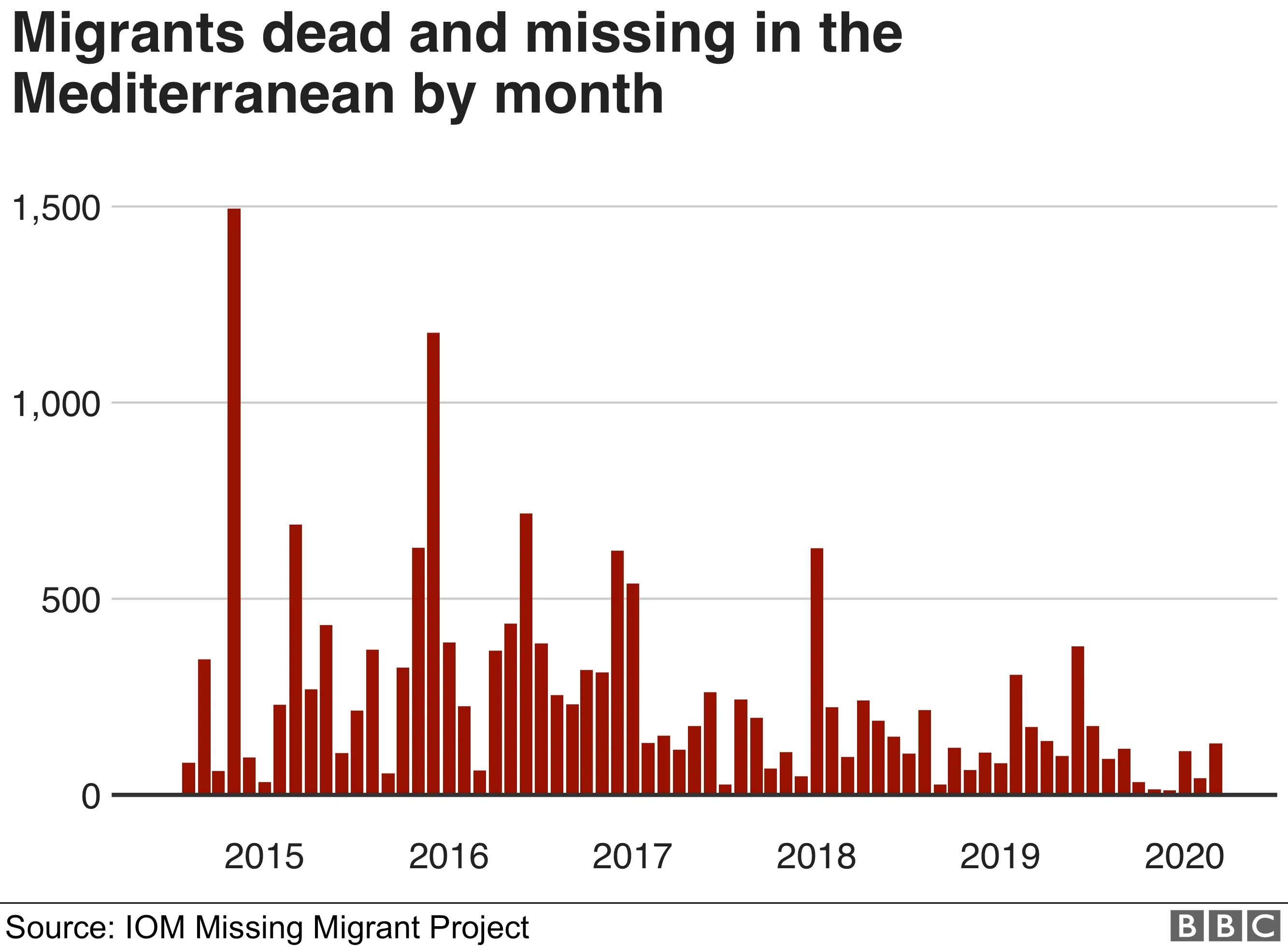
In 2019 the European Union suspended naval patrols rescuing migrants in the Mediterranean. The decision came after EU governments clashed over whether the operation was encouraging more people to risk the journey and fuelling people trafficking.
Both Italy and Malta have prevented boats carry migrants from docking in Italian and Maltese ports.
Most migrants have come through the Eastern Mediterranean
In 2015 huge numbers of migrants arrived in Greece from Turkey, most having made the relatively short but perilous journey between the Turkish coast and the Greek islands.
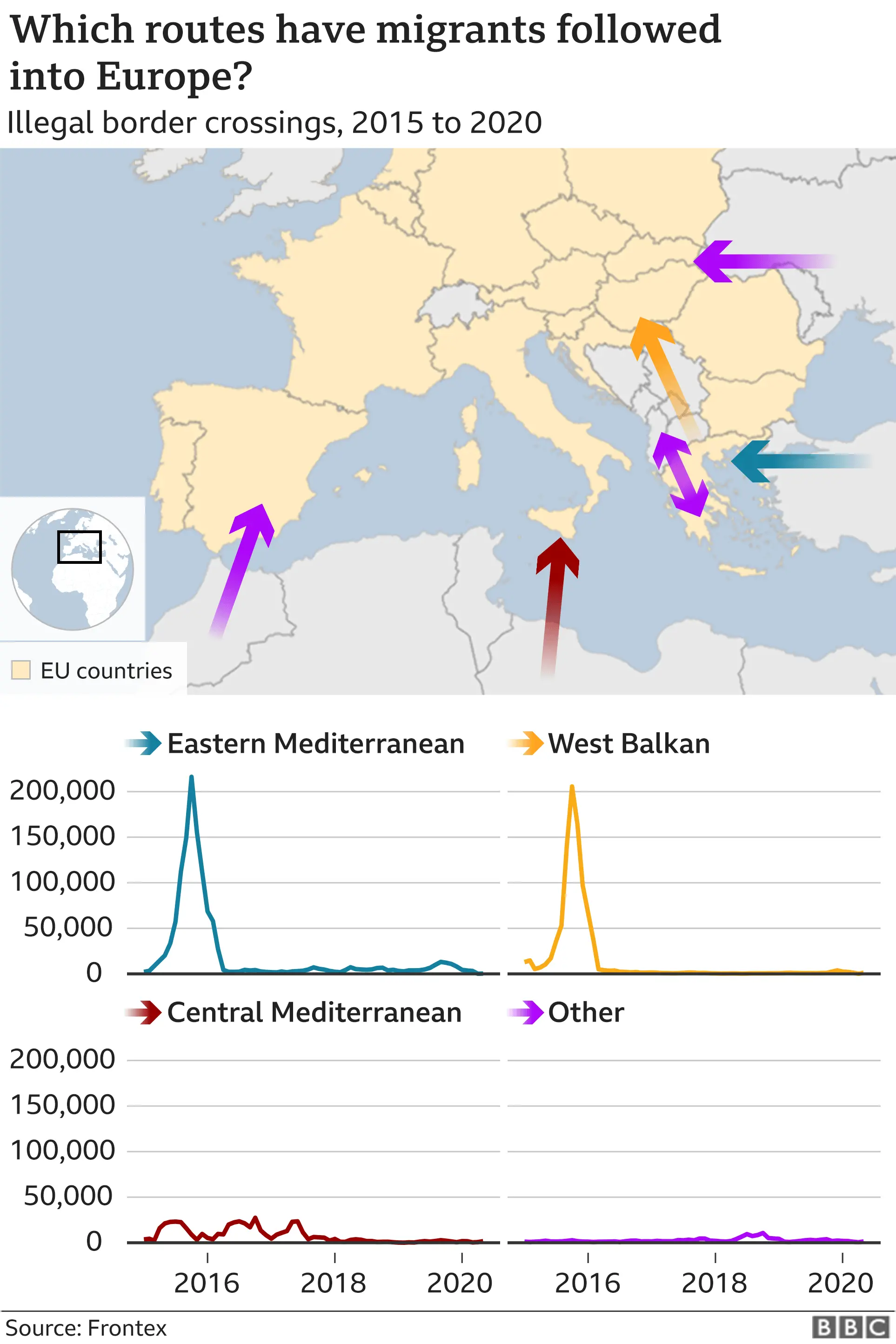

In March 2016 the Turkish government and the European Union made a deal that saw Syrian refugees who arrived on the Greek islands sent back to Turkey. In return Turkey received €6bn (£5.2bn, $6.7bn) in EU aid for migrants and refugees.
The number of illegal border crossings plummeted from 216,000 in October 2015 to 4,000 the following October.
In February 2020, Turkey began allowing some refugees to leave for Greece. The Turkish president, Recep Tayyip Erdogan, said that his country could not cope with a new wave of refugees from Syria and that he could not enforce the 2016 agreement.
Mr Erdogan said that "millions" could cross, but - so far - the numbers have remained much lower than 2015.
Thousands of migrants are stuck in Greece
A large proportion of migrants have first set foot on European soil in the Greek islands of the Eastern Aegean.
Thousands have ended up in camps on Lesbos, Chios, Samos, Leros and Kos.
Many wait for months, sometimes over a year, for the Greek government to review their asylum applications. There were more than 87,000 asylum applications pending at the end of December 2019, with more than 45,000 pending for more than six months, according to the Greek Council for Refugees.
It says the average time for getting a first decision on asylum is 10.3 months - and believes that the coronavirus pandemic is likely to have made the problem worse.
The camps are overcrowded and many migrants have limited access to clean water and electricity. The Greek government says it has had nowhere near enough help from the European Union to meet the migrants' needs.
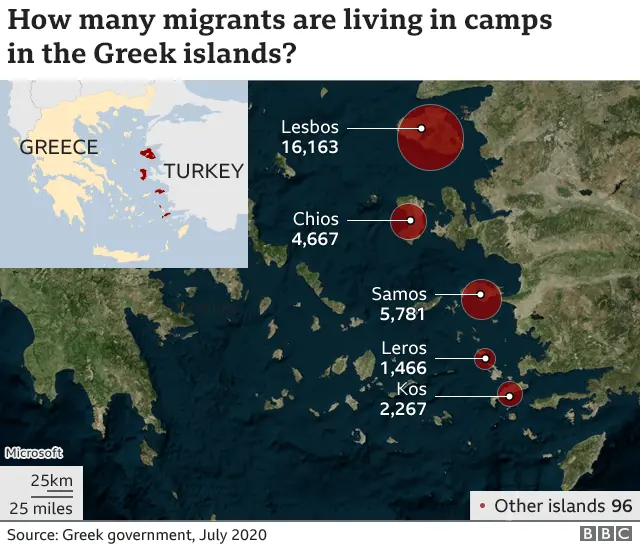

Tunisians head list of 2020 arrivals
Migrants from dozens of countries have arrived in Europe since 2015, many fleeing war in Syria and Afghanistan.
In 2020, according to the United Nations High Commission for Refugees (UNHCR), the most common nationality of people arriving by land and sea in the Mediterranean has been Tunisian.
Nearly 6,000 Tunisians have made the journey so far this year. Many are young men who face poverty, joblessness and political instability at home.
Italy's government says that more migrants are now arriving from Tunisian ports than from neighbouring lawless Libya, which has been a hub of migration from sub-Saharan Africa.
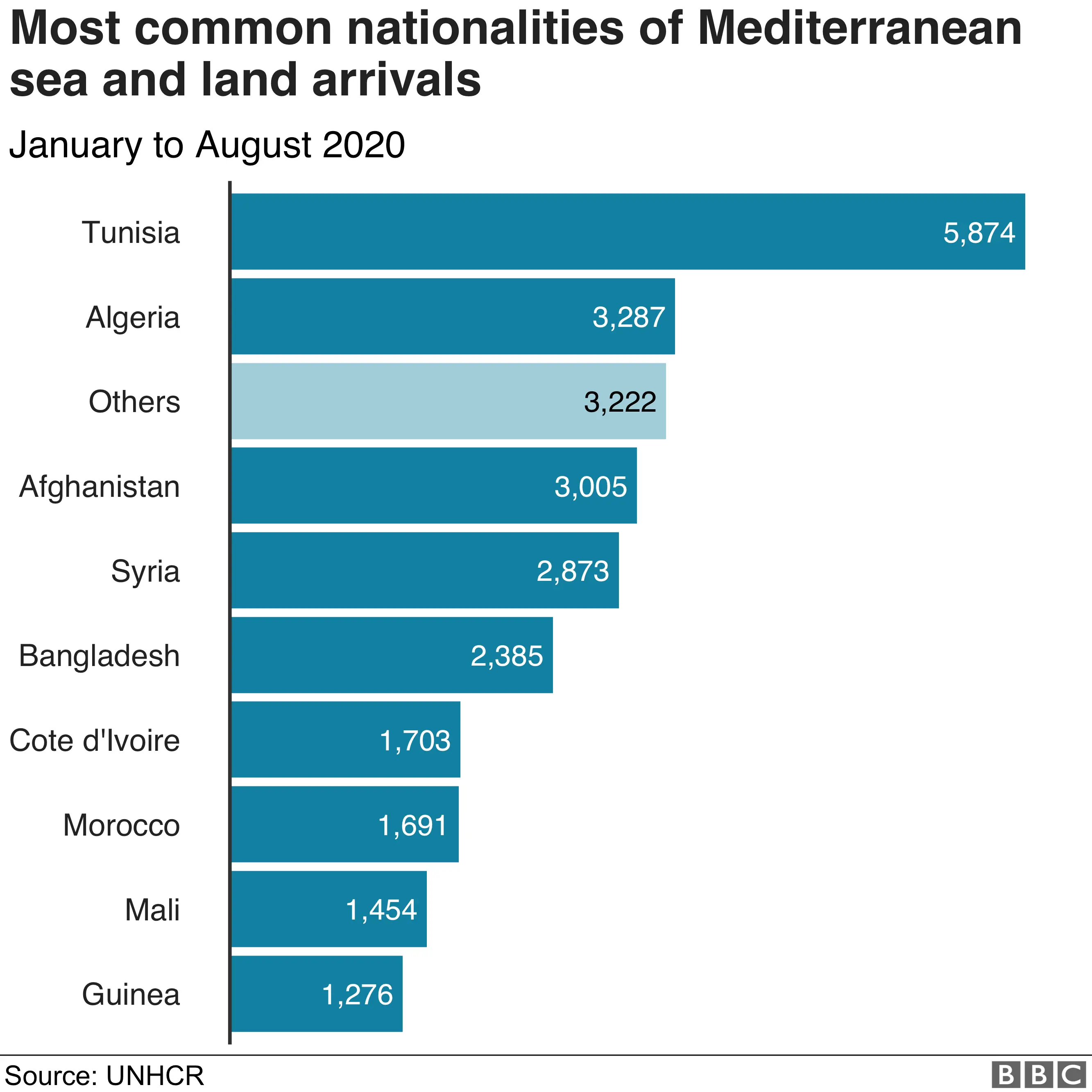

Overall, fewer people are making the journey
2015 saw a huge spike in the numbers of migrants reaching Europe.
Each subsequent year the numbers have been smaller, but there is always a seasonal fluctuation as traffickers and others take advantage of calmer seas in the summer months.

The biggest monthly total was in October 2015 when more that 220,000 arrived in Europe. The latest full monthly total for July 2020 is 10,605.
Germany has grappled with how to integrate migrants
The surge of migrants in October 2015 came two months after Germany's Chancellor Angela Merkel opened her country's door to migrants, famously declaring: "Wir schaffen das" - we will manage it. Eventually, more than a million migrants entered Germany.
Chancellor Merkel's open-door policy proved unpopular with many supporters of her Christian Democratic Union (CDU) party, and it boosted support for the far-right Alternative for Germany (AfD).
Mrs Merkel stood by her 2015 decision, but told a CDU party congress in 2016 that the same situation "must not happen again".
Germany's government has continued to grapple with questions about how best to integrate the new arrivals.
A recent study by Germany's Institute for Employment Research (IAB) indicated that growing numbers of refugees have been finding jobs. Researchers studied a group of 8,000 refugees who arrived in Germany between 2013 and 2018, and found that 49% were able to find steady employment within five years of arriving.
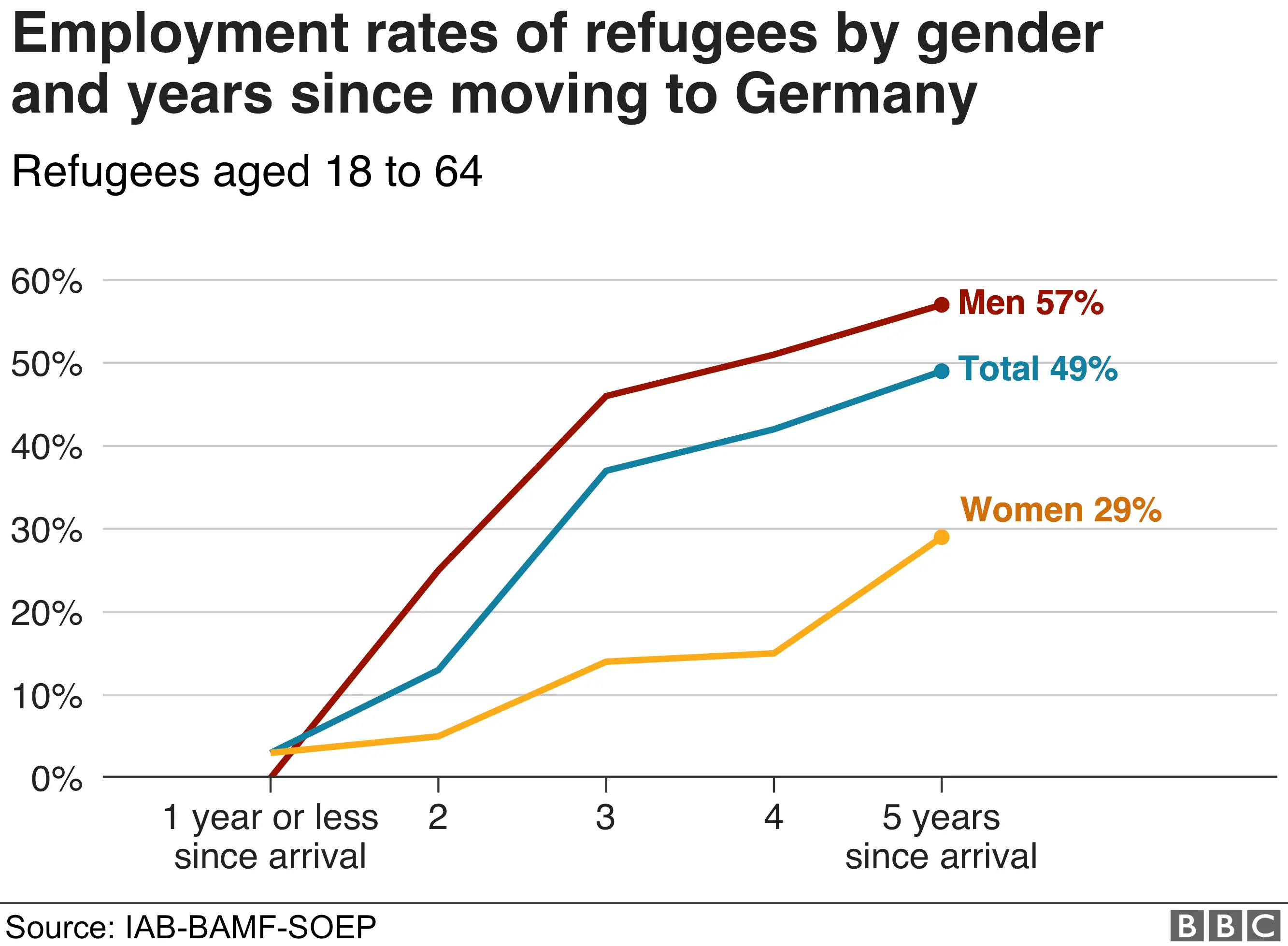
According to the Federal Employment Agency in March, nine percent of all unemployed people in Germany were asylum seekers, mostly young and male.
The coronavirus pandemic since March is likely to have made finding employment significantly harder.
Studies also indicate that many refugees are making progress in acquiring German language skills, a key measure in integration.
Research from Germany's Federal Office for Migration and Refugees (BAMF) in 2020 said that 44% of the refugees rated their German language skills as "good" or "very good." In 2017, the figure was 35% and in the first survey in 2016, it was only 22%.
Experts from the German Institute for Economic Research have found that many refugees, including 75% of Syrians, were in higher educational groups in their home countries before arriving in Germany.
However, some problems of social integration have persisted.
A regular government-backed survey in 2017, of around 5,700 refugees who had arrived in Germany between January 2013 and December 2016, looked at their social interactions. It found that, whilst 78% of refugees spent time with Germans daily, several times per week or less frequently, 22% of refugees said they never spent time with Germans.
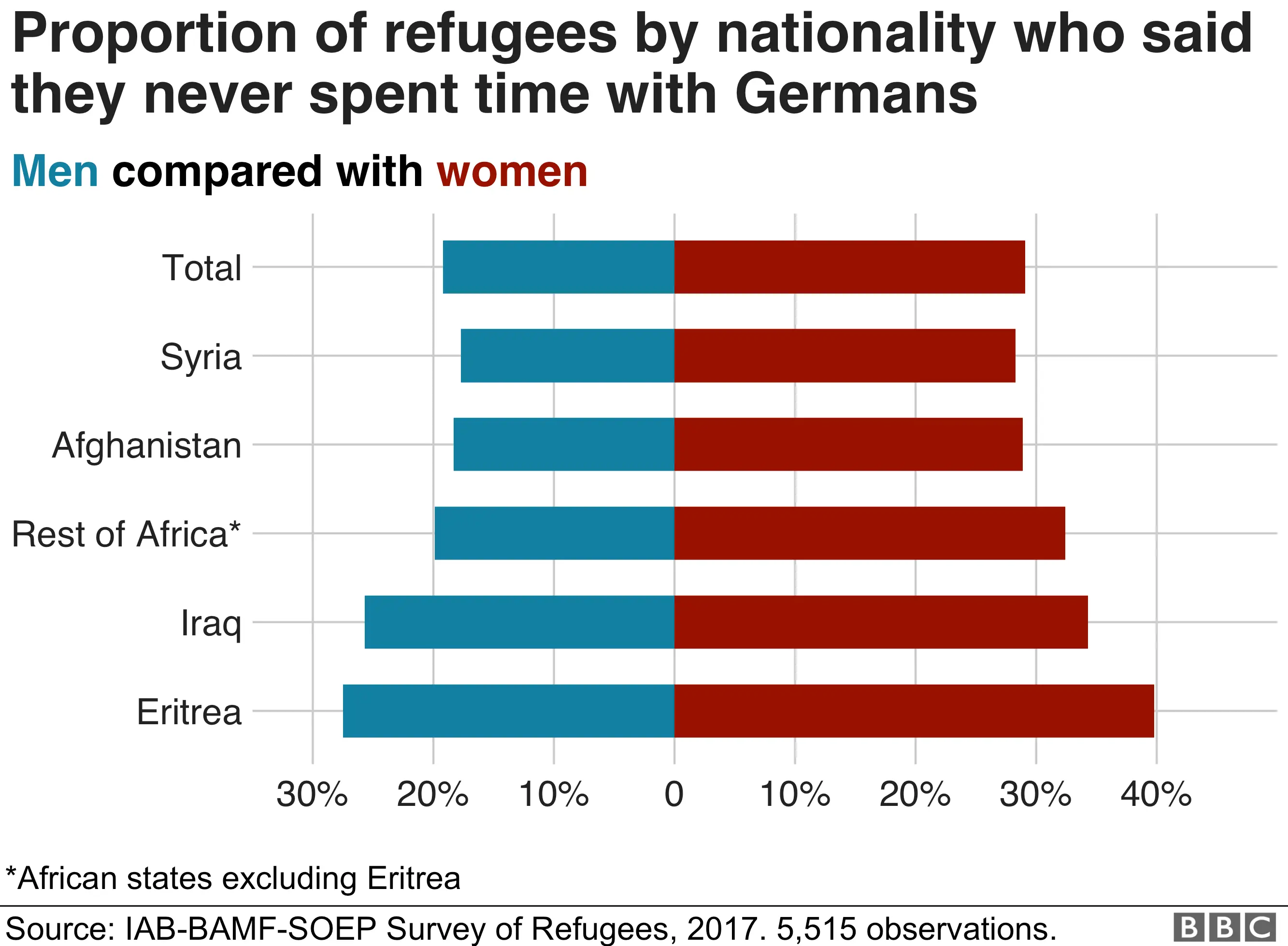

Migrants are crossing the Channel by sea
In 2015, whilst attempts by migrants to cross the Channel to the UK on board lorries and other vehicles were common, the number of sea crossings is thought to have been very low.
Since 2018, the numbers attempting to cross the Channel by sea in small boats have increased sharply. In 2020 so far at least 4,500 people have made the crossing in more than 350 boats. A record of 235 people in a single day was set on 6 August.
It's thought that the tightening of port security around vehicles in France has prompted more traffickers and individuals to attempt this extremely dangerous journey across one of the busiest shipping lanes in the world.

Written and produced by David Brown
